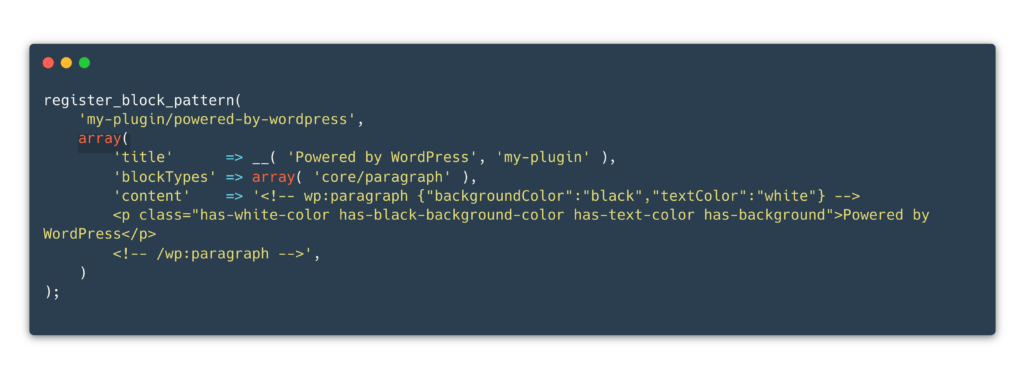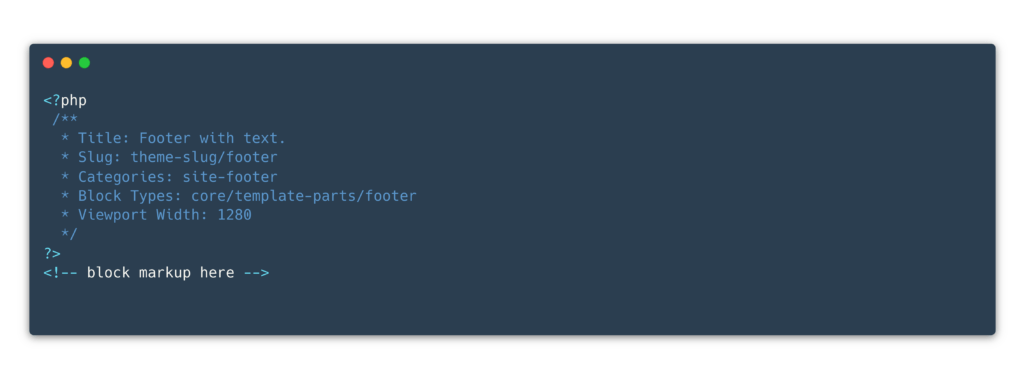WordPress Blocks have become a key focus of our work, and WordPress Block Patterns, in particular, have caught my attention. While custom blocks and tools like ACF are important, the introduction of the group block and block patterns has changed how we design. Now, we don’t have to spend as much time creating each custom block or relying only on plugins for complex layouts. With patterns, we can easily make detailed designs right in WordPress.
Let’s take a closer look at how patterns have developed since their introduction in WordPress 5.5, and explore the latest features enabled by the newest APIs.
WordPress Block Patterns
In August 2020, WordPress 5.5 introduced something new called block patterns. These are ready-made pieces that help you design your website pages more easily.
With block patterns, you can choose from many designs to put into your pages. You can make a big headline, a picture gallery, or a testimonial section without doing much work. Block patterns first showed up in the Gutenberg plugin Version 7.7. They were pretty simple at first, but they quickly got better and became useful for building websites.
WordPress 5.5 | Twenty Twenty Theme
What’s great about block patterns is that you find them right where you work in WordPress. You don’t need to go anywhere else to use them. It’s like adding a new feature to your website that’s already part of WordPress.
Also, in WordPress 5.5, block patterns worked with reusable blocks. If you had something you used a lot, like your business hours or a contact form, you could still use them with block patterns. But as WordPress improved, block patterns became more powerful, offering more design choices. Using reusable blocks became less important, and block patterns became the main tool for making cool layouts.
Utilizing Block Patterns
Here’s how you can use block patterns:
- Making a Pattern: First, design a layout using blocks in the block editor. Then, save it as a pattern and use it in different parts of your website.
- Patterns API: WordPress gives developers a way to add and manage patterns to create custom designs.

Block patterns make it easier for everyone to design their website pages. They’re like shortcuts that help you make your website look great without spending much time on it.
WordPress 5.9 | Twenty Twenty Two Theme
Improvements to Block Patterns
One common struggle developers faced was maintaining the structure of patterns while allowing content editing. This meant that users could unintentionally disrupt the layout of patterns when making changes.
Introducing Block Level Locking
WordPress 5.9 introduced a new block level locking mechanism aimed at simplifying block editing within patterns. With this enhancement, users now can selectively apply locks to individual blocks, controlling their movement or removal. This means that developers like myself can now ensure that the structure of patterns remains intact while still allowing users the freedom to edit content within those patterns. It’s a small but significant improvement streamlining the pattern editing process and enhancing the overall user experience.
Block Level Locking | Twenty Twenty Two Theme
WordPress 6.0 Enhancements
Version 6.0 introduced significant enhancements for working with patterns and themes, offering developers more flexibility and site owners a smoother experience. Three notable features stand out:
Pattern Registration from Pattern Directory for Themes
In WordPress 6.0, themes can register patterns from the Pattern Directory using the theme.json file. By specifying the desired patterns within the “patterns” field, themes can integrate selected patterns into their design. This simplifies the process of accessing and utilizing patterns directly within themes.

Placement of Patterns in the /patterns Subfolder
Themes now have the capability to define block patterns as files within the /patterns directory. Each pattern file contains metadata headers followed by the pattern’s source code. This organizational structure streamlines the management of patterns within themes, particularly benefiting block themes by reducing reliance on functions.php for control.

Block patterns have progressed significantly since their introduction in WordPress 5.5, with each update to make website design easier. WordPress 5.9 brought enhancements that improved control over block editing within patterns. By WordPress 6.0, patterns were further refined, allowing themes to easily incorporate patterns from the Pattern Directory and define patterns in a separate /patterns subfolder.
These improvements made it simpler for developers to integrate patterns into themes, providing them with more options and solidifying patterns as a key tool for modern website design.
Starter Patterns for Any Post Type
In WordPress 6.1, developers have introduced an enhancement for site builders: the ability to add starter patterns to any post type. Now, you can opt-in to utilize starter patterns when creating content on your WordPress site, whether it’s a blog post, a portfolio item, or any other custom post type.
WordPress 6.2 | Twenty Twenty-Three Theme
Reusable Blocks Renamed to Patterns
WordPress 6.3 introduces a terminology change: Reusable Blocks are now called Patterns. This update reflects the broader scope of patterns within the WordPress ecosystem and brings Synced Patterns, a new type of block pattern that behaves similarly to reusable blocks. Synced Patterns enable you to make edits in one place, with changes reflected everywhere the pattern is used. You can also customize individual instances without affecting the original pattern.
WordPress 6.3 | Block Editor
For more details, visit Synced Pattern Documentation.
Improved Pattern Management
WordPress 6.4 brings significant improvements to pattern management. Now, you can categorize and filter patterns, making the site-building process simpler. Custom categories help organize patterns effectively, while advanced filtering in the Patterns section of the inserter makes it easier to find and use patterns.
WordPress 6.4 | Twenty Twenty-Four Theme
Additionally, introduces the ability to share patterns across sites. You can easily import and export patterns as JSON files directly from the Site Editor’s patterns view, making collaboration easier and workflow smoother. These updates allow users to make better use of blocks and make site building in WordPress even more straightforward. For access to a wide range of patterns, visit WordPress Patterns.
Conclusion
While no specific enhancements were introduced in version 6.5, we entered this stage with a robust set of patterns. With synced controls, locking options, starter patterns, and a wide range of options and controls, patterns have evolved into one of the most powerful tools for site builders. It’s been a long road from the first pattern iteration to what we have now.
WordPress 6.5 | Twenty Twenty-Four Theme
Check out the patterns documentation to explore further and unlock the full potential of WordPress Patterns.
Comments